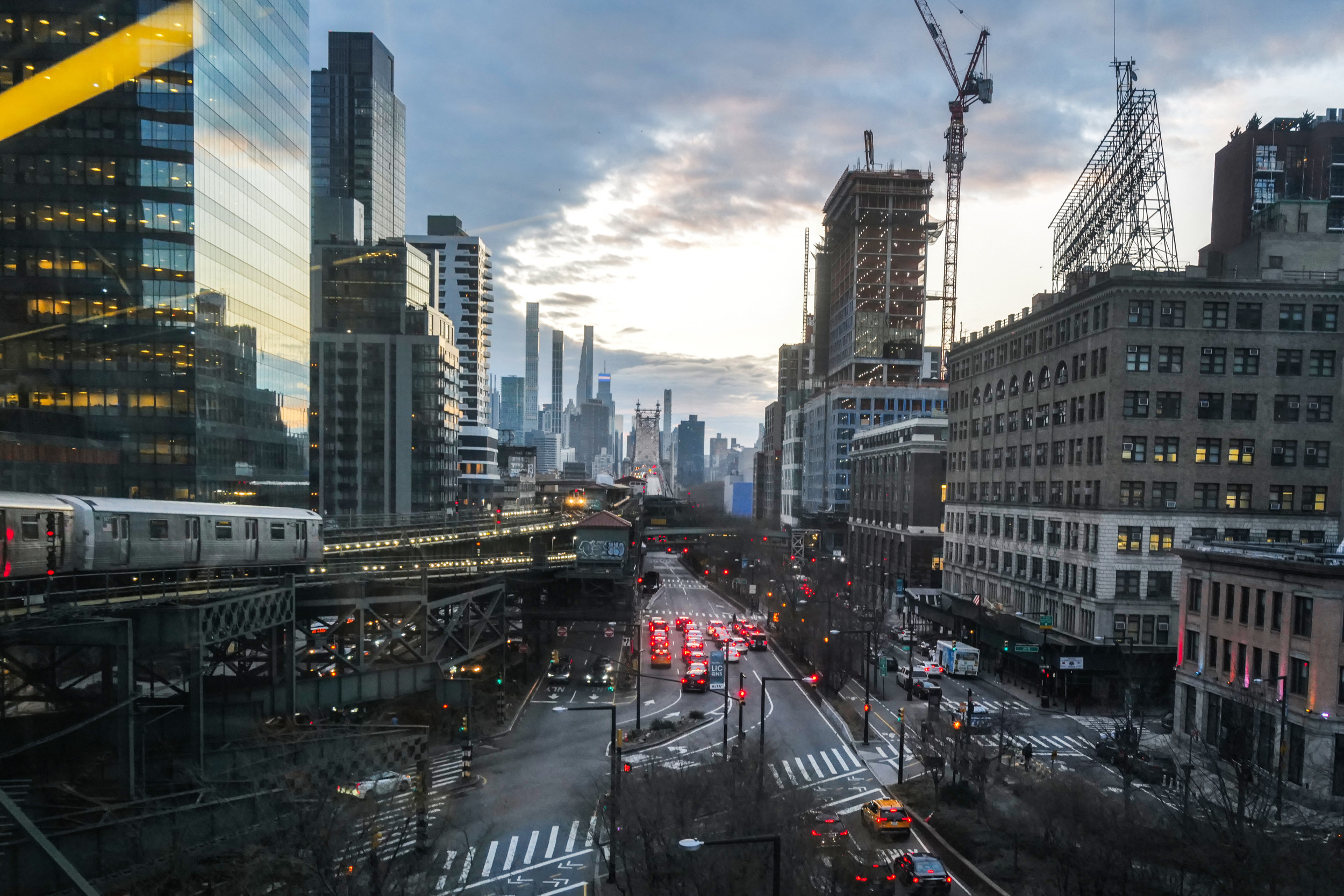Infra
New York’s high-speed rail problem

New York is making efforts to improve its rail services, but high-speed rail, common in other parts of the world, remains elusive.
A state and federal review called “High Speed Rail Empire Corridor” was completed last year, outlining plans for reducing travel times and increasing reliability along the Empire Corridor, which runs from Niagara Falls to New York City.
The improvements, however, fall short of high-speed rail standards, with peak speeds projected at 90 mph—far below the 125-mph cutoff that typically defines high-speed trains in the U.S.
So, why can’t New York get high-speed rail on track? Newsweek spoke to rail experts to find out more.
CHARLY TRIBALLEAU/Getty Images
“High-speed rail requires significant financial investments and dedication of uninterrupted segments of land, both of which face challenges in locations across the United States,” Sarah Kaufman, director of the NYU Rudin Center for Transportation, told Newsweek over email.
“A primary reason is that New York struggles with analog-era, 20th-century technology in a rapidly changing, digitized, AI-infused 21st century. A key reason why the best, most advanced high-speed rail (HSR) has been built at a dizzying pace in settings like China, Taiwan and South Korea is their delayed modernization,” Robert Cervero, professor emeritus at UC Berkeley, told Newsweek.
“These countries rapidly modernized, industrialized and urbanized in the late 20th century, corresponding with rapid advances in digital technologies, infrastructure designs and the internet,” Cervero said.
He noted that “Any large-scale infrastructure investments they made benefited from this timely correspondence between investment and technology. Rather than having to tear down, reconstruct and update old infrastructure, they could build a new, more economically and often on greenfields (in newly emerging new towns).”
“Significant parts of New York‘s rail network are more than a century old,” Cervero said. “Upgrading, replacing and rebuilding them is a much costlier, time consuming and politically charged proposition than in such settings.”

CHARLY TRIBALLEAU/Getty Images
William C. Vantuono, editor-in-chief of Railway Age, spoke about the obstacles and delays facing HSR in New York, noting that “Aside from the fact that the New York MTA requires a huge amount of necessary support (and congestion pricing—halted because of politics—would be a big help), federal and state governments have not made intercity passenger rail a priority.”
“CSX owns the right-of-way and provides essential freight service, vital to the national economy,” he said. “Passenger trains, especially higher speed, are not operationally compatible with freight. They eat up capacity and require higher track maintenance costs. Government needs to step up and pay for construction of dedicated passenger tracks on the CSX-owned right of way.”
How does the lack of HSR impact New York? The state would “benefit significantly” from a network, according to Kaufman. “We have several upstate cities between which people travel for work and social visits. Offering these cities means of travel that is safe and efficient opens economic opportunities for jobseekers and…new experiences for tourists, as well as promoting safe travel, especially in harsh winter conditions,” she said.
The lack of HSR has a “huge impact,” on the state in Vantuono’s view. “Travelers are restricted to congested, truck-clogged and dangerous highways and an overtaxed, overcrowded airline system upon which climate change is wreaking havoc. High-speed passenger rail provides center city to center city transportation that’s safe, reliable and far more pleasant than flying.”
“Japan discovered this in 1964 with the Shinkansen. France followed in 1983 with the TGV. Germany, Spain, Italy and soon the entire European continent followed. China, after $500 billion in investment, now has the world’s largest high-speed network,” Vantuono added.

Gary Hershorn/Getty Images
Cervero disagreed. “I don’t think the absence of HSR has had a significant detrimental effect on New York City’s economy,” he said. “HSR would not doubt help catapult New York’s transportation standing on the global stage, but the cost of doing so would be astronomical.”
He noted that these rail systems are “more essential in Europe because many urban centers lie in between the sweet spot where HSR is most cost-effective.” He suggested that upgrades to the subway and bus networks, which could be funded by congestion tolls, could bring more “bang for the buck,” than investing in HSR.
So, what’s next for public transport systems in the state?
A spokesperson for New York State Department of Transportation (NYSDOT) told Newsweek in an email that the department is “Committed to improving passenger and freight rail service across the Empire Corridor and has made substantial infrastructure investments in recent years to enhance speed, convenience and reliability, including track and signal upgrades and the opening of several renovated stations across the corridor.”
The NYSDOT spokesperson said that, “While implementing higher-speed rail service in New York remains a challenging undertaking, given the age and condition of the state’s existing rail infrastructure and property constraints along the corridor, the recent completion of a Final Tier 1 Environmental Impact Statement for high speed rail was an important milestone in this process that places the Department in good position to seek federal funds to help meet this goal.”
The plan envisions a dedicated third track between Buffalo and Schenectady, allowing Amtrak to bypass freight trains and reduce delays. Vantuono echoed this, stating: “We might see a few more higher-speed Amtrak trains on the New York-Albany-Buffalo corridor. That’s about it. Again, it will require investment, lots of it.

CHARLY TRIBALLEAU/Getty Images
The NYSDOT spokesperson said that the department “is now working with the Federal Railroad Administration, through the Corridor Identification Program, to identify and progress a pipeline of intercity passenger rail projects that will allow us to achieve the goal of faster, safer and more reliable rail service across the entire 464-mile corridor, which will further economic growth and enhance connectivity for New Yorkers.”
While the improvements are promising, there is no clear timeline for when construction will begin. High-speed rail may not be coming to New York soon, but a more dependable service could still be on the horizon.
Do you have a story Newsweek should be covering? Do you have any questions about this story? Contact LiveNews@newsweek.com.






![[!LIVE-FOOTBALL@!]+ Commanders vs Eagles Live Stream ! Atlanta Falcons vs New York Giants LIVE , player stats, standings, fantasy games TV channels and more HS8079 [!LIVE-FOOTBALL@!]+ Commanders vs Eagles Live Stream ! Atlanta Falcons vs New York Giants LIVE , player stats, standings, fantasy games TV channels and more HS8079](https://www.reddotdigitalit.com/wp-content/uploads/2021/05/Streaming-Platform.jpeg)



